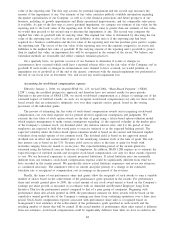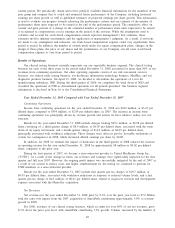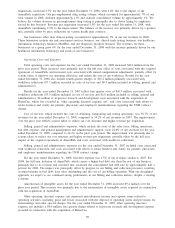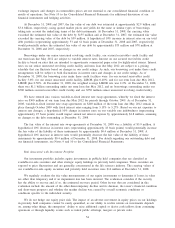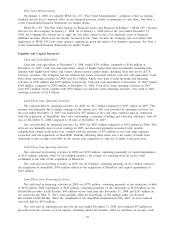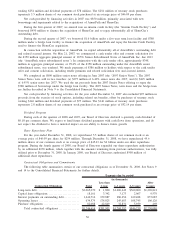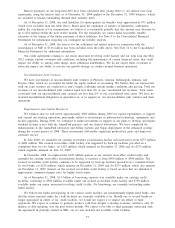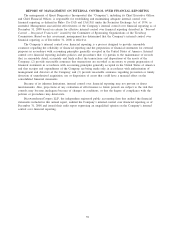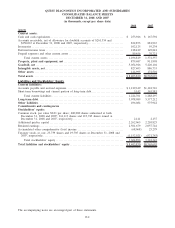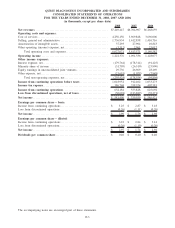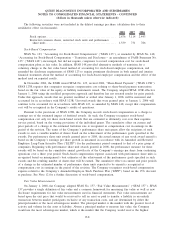Quest Diagnostics 2008 Annual Report Download - page 70
Download and view the complete annual report
Please find page 70 of the 2008 Quest Diagnostics annual report below. You can navigate through the pages in the report by either clicking on the pages listed below, or by using the keyword search tool below to find specific information within the annual report.We believe that cash and cash equivalents on-hand and cash from operations, together with our borrowing
capacity under our credit facilities, will provide sufficient financial flexibility to meet seasonal working capital
requirements and to fund capital expenditures, debt service requirements, cash dividends on common shares, share
repurchases and additional growth opportunities for the foreseeable future. We believe that our credit profile
should provide us with access to additional financing, if necessary, to fund growth opportunities that cannot be
funded from existing sources.
Outlook
As discussed in the Overview, despite the continued consolidation among healthcare insurers, and their
continued efforts to reduce reimbursement for providers of diagnostic testing, and the general economic
conditions, we believe that the underlying fundamentals of the diagnostic testing industry will continue to
improve and that over the long term the industry will continue to grow. As the world’s leading provider of
diagnostic testing, information and services, we believe we are well positioned to benefit from the growth
expected in our industry.
We believe our focus on delivering a superior patient experience and Six Sigma quality as well as the
investments we are continuing to make in our distribution network, our industry leading test menu and our
information technology solutions will further differentiate us over the long-term and strengthen our industry
leadership position. In addition, we plan to leverage our knowledge and expertise in diagnostic testing to further
expand into international markets and point-of-care testing.
Our strong cash generation, balance sheet and credit profile position us well to take advantage of these
growth opportunities.
Inflation
We believe that inflation generally does not have a material adverse effect on our results of operations or
financial condition because the majority of our contracts are short term.
Impact of New Accounting Standards
In September 2007, the Financial Accounting Standards Board (“FASB”) ratified Emerging Issues Task
Force (“EITF”) Issue No. 07-1 “Accounting for Collaborative Agreements.” In December 2007, the FASB issued
SFAS No. 141(R) “Business Combinations” and SFAS No. 160 “Noncontrolling interests in Consolidated
Financial Statements, an Amendment of ARB No. 51.” In February 2008, the FASB issued FASB Staff Position
(“FSP”) No. FAS 157-2 “Effective Date of FASB Statement No. 157.” In March 2008, the FASB issued SFAS
No. 161, “Disclosures About Derivative Instruments and Hedging Activities – an amendment of FASB Statement
No. 133.” In May 2008, the FASB issued SFAS No. 162, “The Hierarchy of Generally Accepted Accounting
Principles.” In June 2008, the FASB issued FSP EITF 03-6-1, “Determining Whether Instruments Granted in
Share-Based Payment Transactions Are Participating Securities.” In October 2008, the FASB issued FSP No. FAS
157-3, “Determining the Fair Value of a Financial Asset When the Market for That Asset Is Not Active.” In
November 2008, the FASB ratified the consensus reached under EITF Issue No. 08-7, “Accounting for Defensive
Intangible Assets.” In December 2008, the FASB issued FSP No. FAS 140-4 and FIN 46(R)-8, “Disclosures by
Public Entities (Enterprises) about Transfers of Financial Assets and Interests in Variable Interest Entities.” The
impact of these accounting standards is discussed in Note 2 to the Consolidated Financial Statements.
58


